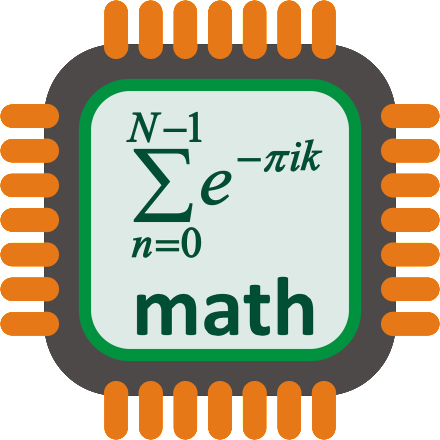
A question I’ve had in my mind for a long time now is: why is self-employment tax for a sole proprietor based on 92.35% of self-employment income instead of the whole amount?
I’ll attempt to explain in this post.
SE Tax vs. FICA Tax
FICA taxes are withheld from employee wages and fund the employee’s Social Security and Medicare benefits.
The Social Security piece is 6.2% (up to the Social Security wage base for the year) and the Medicare piece is 1.45%. For most employees, that makes the FICA tax 7.65%.
Behind the scenes, the employer kicks in a matching 7.65% contribution on the employee’s behalf, making it a total of 15.3% of the employee’s wages going to the government (7.65 x 2 = 15.3).
A self-employed person does not draw a true wage, so there is no FICA withholding. Instead, the self-employed person pays self-employment tax of 15.3%. The tax is assessed on 92.35% of the person’s self-employment income.
Why 92.35% instead of 100%?
Explanation
With the FICA tax on wages, the employer is incurring a 7.65% expense on each dollar paid to an employee. This is a real expense to the company.
Example:
Company X pays Employee Z $10,000 of gross wages. The company pays 7.65% FICA tax on those wages. Company X’s books will show $10,000 of salary expense, and $765 of payroll tax expense for FICA.
Company X gets to take a deduction for the company’s portion of FICA taxes. In order to achieve some equality between an employee/employer situation and a self-employed person, the self-employed person gets to take that 7.65% deduction into account when calculating self-employment tax (100 – 7.65 = 92.35)
One thing to be clear on: the 7.65% is NOT taken as a deduction on the Schedule C. It’s accounted for on Schedule SE.
Example:
Joe the Window Washer is self-employed. His net income from self-employment is $10,000. This is shown on Joe’s Schedule C. Joe then completes Schedule SE to calculate self-employment tax. On the Schedule SE, he’ll take $10,000 x .9235, which equals $9,235. The 15.3% self-employment tax is then assessed on $9,235.
If any readers out there have a simpler way of explaining, please leave a comment below or send me an e-mail!


[…] Jason Dinesen, Why is Self-Employment Tax Based on 92.35% of Self-Employment Income? […]
Jason,
I had a sole proprietor client who paid himself a wage and issued a W2 at the end of the year. The payroll company deducted 15.3% reported the 7.65% on the W2. Client filed Schedule C for the business income. The question for me as I prepared client’s tax return was how do I report this scenario? First, I reported the wages on line 7, form 1040 and the paid taxes on 1040. Second, because of that 92.35%, the FICA/SE Tax numbers did not agree. The closest that I could get to the proper amount (i.e. the amount that it would have been, if client did not issue a W2 to himself), was achieved by deducting the gross wages on line 26 and including the employer portion of FICA (i.e. the 7.65%) as a deduction on line 23. This method resulted in the least amount of discrepancy. The SE tax was a few dollars more that it would have been had he not issued the W2.
You are correct, the methodology of the law is theoretically intended to give parity between the Sch C and corporate taxpayers, but it doesn’t. I need to re-work this post and write more about it — that’s on my list in my “free time,” ha ha. But here’s an example from a draft:
Let’s say a sole proprietor has net income of $10,000. SE tax = $10,000 x .9235 = $9,235 x .153 = $1,413. SE tax deduction = $1,413 x .5 = $707 Effective amount of income subject to income tax = $10,000 – $707 = $9,293.
The idea behind the law is to make the SE tax based on 100 – 7.65 = 92.35% but let’s take that same $10,000 and say it’s a wage in a corporation. The business will owe $765 of FICA taxes on those wages. $10,000 – 765 = 9,235 instead of 9,293.
Another way of looking at it is, because of FICA taxes, the business will theoretically only pay $9,235 to the employee because of employer-side FICA taxes. So the taxable wages to the employee is $9,235 x .0765 = $706; $9,235+$706 = 9,941, not $10,000.
To get true parity you’d need to do the following: take $10,000 / (1.0765) = $9,289; $9,289 x .0765 = $711 of employer-side FICA $9,289 plus $711 = $10,000.
Final analysis under this method: self-employed person has income tax on $9,293 and FICA taxes of $707 on a total of $10,000; for a corporation, the employee has $9,289 of income, $711 of employee-side FICA taxes, and it adds up to $10,000. This is how it “should” be done but it’s not how the tax code says to do it, so the first option, which in our example produces a $58 difference.
Excellent! The 92.35% of self-employment income mystery has been bothering me too. I can see there is connection betw the number 7.65% (92.35%) and FICA employee ss + medicare deduction. So, the 92.35% is really from employer’s contribution part.
What happens when the sole proprietor earns more than the social security wage base. Do you still apply the 92.35% for someone earning 300K (which exceeds the amount taxable to social security portion of the self employment tax)
Very late in replying, just seeing this 18 months later, but: look at Schedule SE. The 15.3% SE tax is broken between Social Security (12.4%) and Medicare (2.9%). The SS portion stops at whatever the SS wage base is for the year, same as for an employee.
Hi! Thanks for this article! Can I please segue? Does a self-employed S corp owner add their health insurance amount to their calculated earned income to figure the max i401k profit sharing amount of 25%?
I am just now seeing this so you might not see the response but I’m posting it anyway. I believe it depends on what the plan document says — does it reference box 1 earnings, or Medicare earnings.